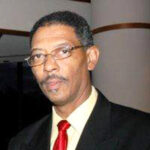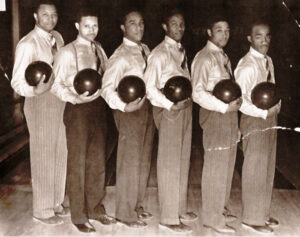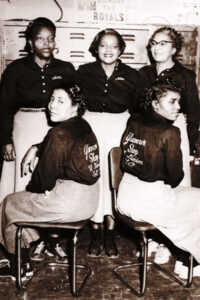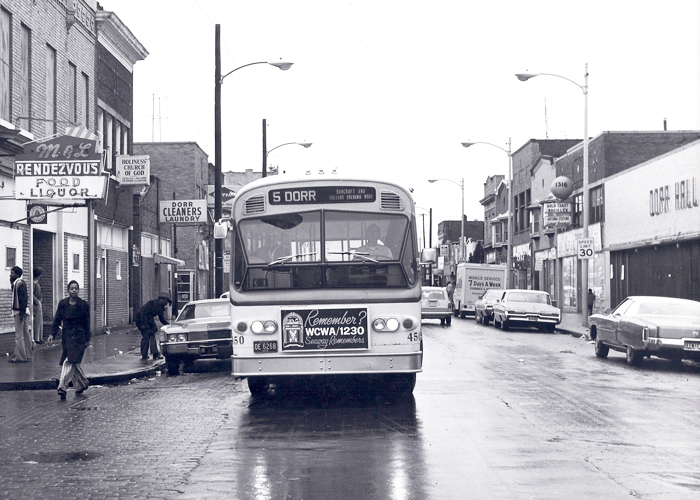
By Robert Smith, Executive Director, African American Legacy Project
Have a vision of excellence, a dream of success, and work like hell. – Dr. Samuel DuBois
This past July, we – The African American Legacy Project [The AALP] – took a cross-section of our Toledo community to Columbus [OH] to visit the King Arts Complex and the King Lincoln Historic District. Our goal was to see how the Columbus community moved past being on life support to flourishing and positioning itself as a magnet for economic growth and development.
The AALP has continued to elevate productive conversations and interactions that are meaningful to our entire community since its inception in 2004. Twenty years ago, our board of directors, a group of individuals who had experienced firsthand lots of life infractions so much so they wanted to do more than dream about a better and brighter future for subsequent generations. They saw a need to stimulate the community to instill a new vitality. This was a forward-thinking board and through its vision statement painted a clear direction for The AALP’s work and role in the community.

This board knew we needed to document our history and simultaneously begin working toward changing what was happening to us right before our very souls. LaRouth Perry, PhD, wrote, our Vision Statement, the psalms of our collective experience:
The African American Legacy Project (AALP) shall be the innovative multi-disciplinary epicenter, celebrating the triumph and spirit of the African-American experience. The African American Legacy Project exists to be a vehicle for raising the historical and present cognizance levels of African Americans in Northwest Ohio communities; be a motivator and promoter of community development; be a resource and repository for historic, current, and cultural inquiry; be an avenue for nurturing unity and the creative process.
Toledo’s African American community has had its challenges. Nationally, there are just too many references about the negative plight of Toledo’s Black population. The truth, however, is Toledo’s African American community has been on life support for a very long time. Long-term Toledoans have evidenced both the ascension and … demise of our community. Quite frankly, taking a close look at the historical timeline that represents Toledo’s Black community and business district one would realize, there came a time where you could see nothing but vastness – no buildings, no businesses, no houses, no people, no… sense of self.
Twenty years later new voices – the voices of third and fourth generations of African American Toledoans -are now also wondering how we can effectuate change. We should welcome these new voices and these new voices should understand the journeys of men and women who came before all of us. After all, we are one.
We all dream of new beginning and we are ready to work toward a new community reality. Yet if we want to look forward, it makes sense to take a look at some of the successes of Toledo’s African American community. For instance, in 1943 the Belmont Neighborhood Saving Club was born.
A handful of neighbors bonded together and chose to collaborate on a mutual vision of stimulating economic and community development.
By 1948, the expanded group announced it was breaking ground on a $100,000
community investment affectionately known as the Belmont Enterprise. That $100,000 figure is probably greater than or equal to $1.5 mil in today’s dollars
The Belmont Enterprise was a multi-use facility housing bowling lanes on its first level serving a population of African American bowlers who had been spurned by traditional houses. The second floor served as a skating rink for community kids and doubled as a multi-purpose room used for weddings, concerts and other events.
That $100,000 investment – financed in part by the then First Federal Bank -translated into full and part time jobs while stimulating new growth and community investment while playing a vital role for community residents.

It is difficult to predict the number of jobs the Belmont created and/or the number of families it served. The story of the Belmont fits so perfectly with the discussion on rebuilding community. Both the Columbus story and the story of the Belmont is absolute proof that collectively we can begin to change our future, we can improve our “right now” by beginning to listen to each other.
The Columbus trip was a lot of things, but first and foremost… it was an exercise in humanity. Every person traveling with us saw firsthand that the dream of rebuilding, revitalization and reinvigorating our community is really possible. Everyone saw it and… what everyone saw was incredibly beautiful. We saw new construction, startup “mom and pops” and across from the cultural center is a relatively newly constructed Urban League building. Just about a quarter mile from the center, Ohio State University invested in the community by building a small hospital.
Across the country the revitalization of older, central-city neighborhoods shows how a cooperative effort between key stakeholders; neighborhood residents, organizations and groups can set the stages to promote and strengthen the economic well-being and quality of life. We understood that 20 years ago and set out to tell the stories of the men and women. families and businesses who lived worked and elevated an area rich with history, cultural significance and civic pride in this near downtown area called the Dorr Street Corridor.
The Columbus trip marked a serious effort by The AALP to reach out to every quadrant of our community and create platforms to allow us to sit at the table just find out how similar our dreams really are.
In the coming months, we will unveil a community campaign entitled, “We are One.” The intent of the “We are One” campaign is meet the community where they are, understand what individuals and individual businesses are trying to accomplish and bring a wholistic approach to bringing life back into our community. It is going to take a little work but, if we want a better tomorrow, we will work together to figure out today. We’ve even adopted a campaign anthem written and performed by Frankie Beverly and Maze. The song and our community campaign have the same title, “We are One!” It’s a powerful song with a powerful message. Get a chance. Take a listen to the song. I’m nominating it for our community anthem.
They African American Legacy Project is working with the Toledo Plan Commission to assist this community in creating a district similar to Columbus.
Over the course of the next several months, we will continue to reach out to you – the community – and invite you to join us on our next adventure and/or event. We will reach out to you or… please feel free to call us at 419-720-4369 or email is at info@africanamerican legacy.org.
Afterall… we really are one.
.

